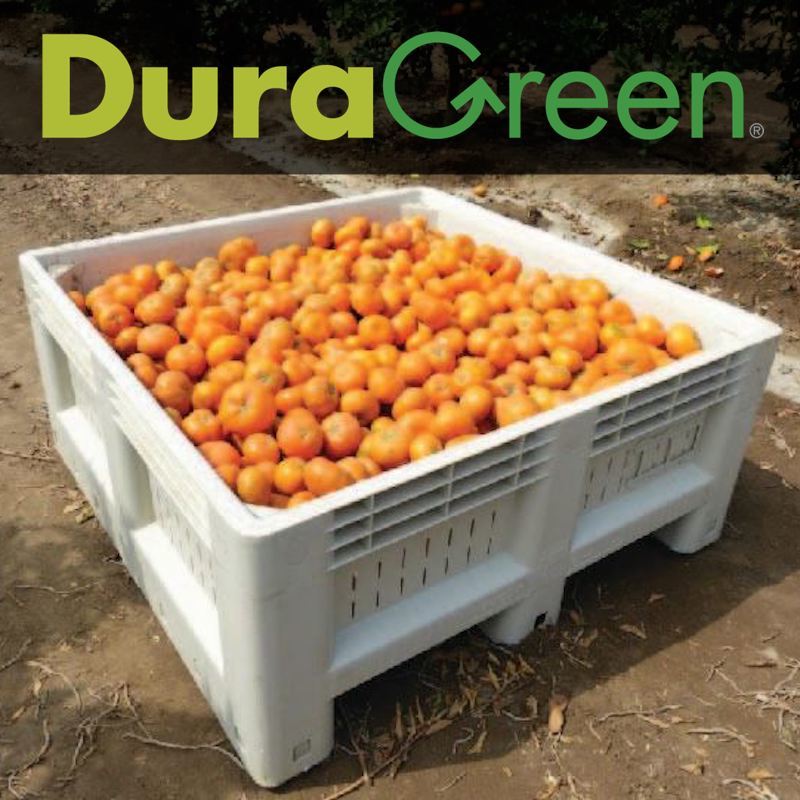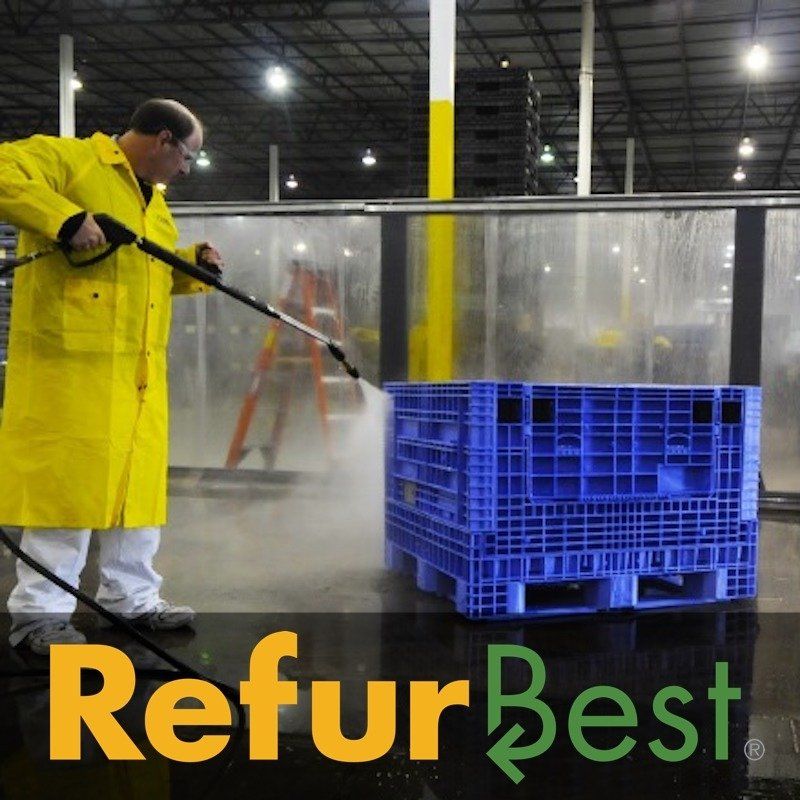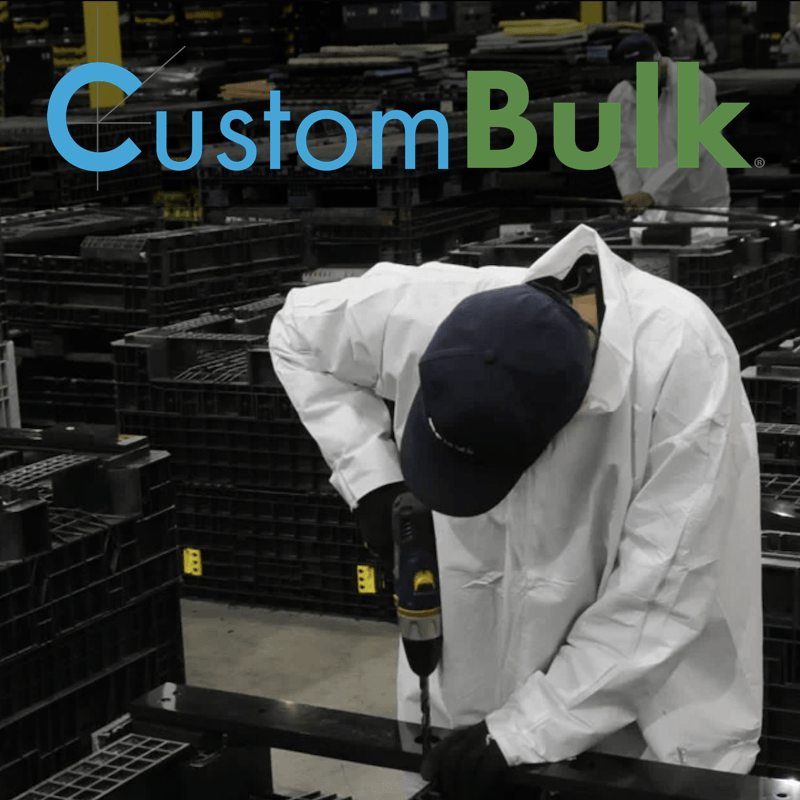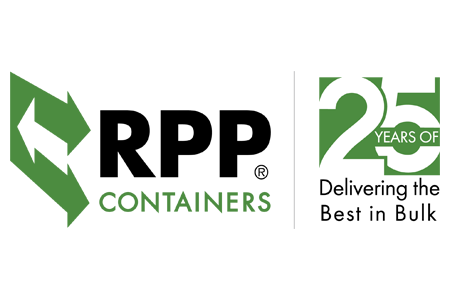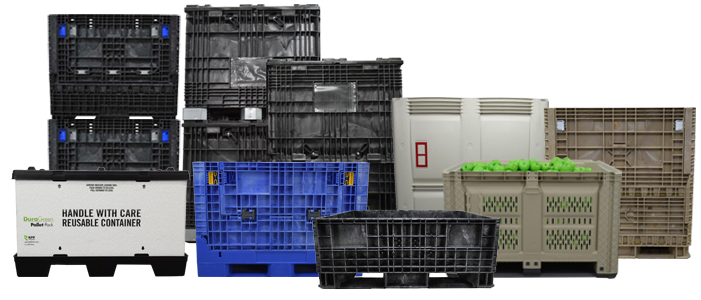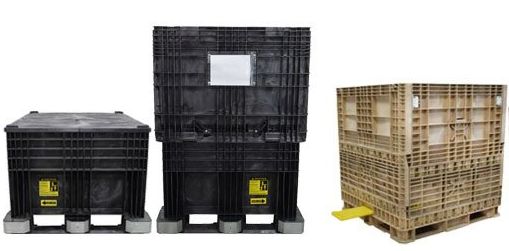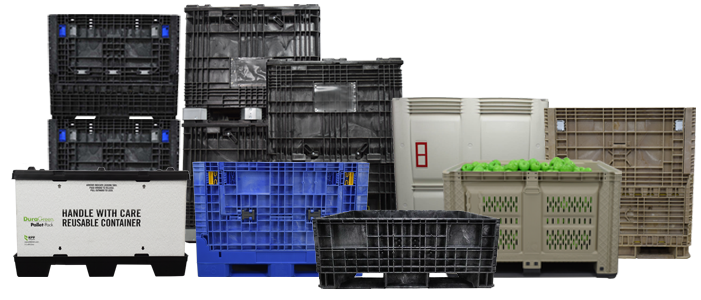What types of Bulk Containers do RPP Containers specialize in?
What are the five types of bulk containers?
The word container can mean anything from small plastic containers you put your leftovers in or sea containers that you ship across seas or even build homes out of! However, RPP Containers has a specific niche, focused solely on Bulk Containers. This is a category that consists of containers in the pallet size range. They ship freight and can hold large amounts of weight. There are multiple styles and types of bulk containers along that spectrum, and we stock and specialize in five different kinds to ensure we reach every industry we can. We focus on the collapsible bulk containers, fixed-wall, solid wall bulk bins and harvest bins, pallet packs, and hopper bottoms. Below is a brief overview of each type.
Collapsible Bulk Containers
Collapsible containers are the most popular container we specialize in and the ones that brought us where we are today! We stock eight different footprints in the collapsible container category, each with various sizes. Because the collapsible containers gained popularity over the years, we have been able to also stock these in refurbished. We can cover just about any need and price point with the sizes and prices we offer on collapsible containers. Keep in mind- if you need a specific size that does not fall under the “standard” sizing, we can customize collapsible containers as well.
Fixed Wall Containers
Fixed wall containers are very similar in appearance and functionality to collapsible containers, but the main difference is that they do not collapse for a good reason! Fixed wall containers are designed more towards the use of smaller, heavy parts. Whether storing or shipping them, fixed wall containers are more rigid and do not have seams that allow for heavier-duty applications. Fixed wall containers also tend to be shorter in height- up to 25” to accommodate their purpose of being able to hold smaller, heavier items.
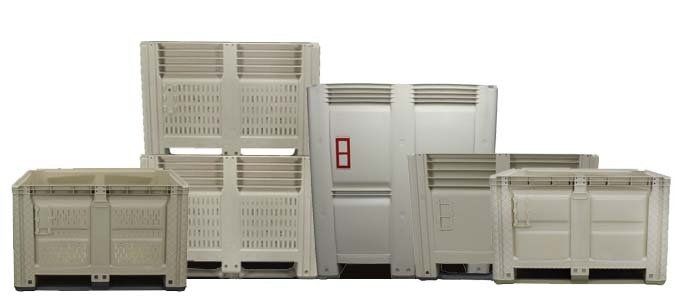
Solid Wall and Harvest Bulk Bins
Bulk bins come in standard sizes and act as fixed-wall containers because they do not collapse. They are designed this way because, for the most part, their intended use is to be utilized within the agricultural and food industries and for liquid applications. Bulk bins come in three different forms- solid wall (liquid tight), FDA approved/Non-FDA approved, and last but not least, vented harvest bins. Each form provides a different need for a different application.
Pallet Pack Containers
Pallet pack containers are the cousin of corrugated gaylords. They grew from that idea, but the pallet pack kit created a longer life span than standard corrugated gaylords and replaced the one-way, disposable packaging theme. They come in three separate parts- a plastic top, a plastic pallet, and sleeves. These containers offer a corrugated sleeve and a plastic sleeve- both are excellent options, but the corrugated can hold more weight, and the plastic holds up better outside, in the elements, etc. These offer a lightweight, easy assembly option but can still hold large amounts of weight.
Hopper Bottom Containers
Our hopper bottom containers are industry standards- specifically designed for the agricultural industry. We carry two different versions with multiple height options and weight ratings. We are here to appeal to as many industries and applications as possible!
Do you have questions?
With so many different container niches, RPP Containers focuses on bulk containers. Please get in touch with our sales line 513-489-2244 or your personal sales rep to learn what bulk containers work best for you.
Sarah DeNoma |Account Manager
Sarah has been with RPP Containers for several years as an account manager and has almost a decade of knowledge and experience in the bulk container industry. Sarah works diligently with all her customers to find the optimum bulk container for the customer's application.
Info Links
Other Brands
Copyright | RPP Containers.
